All about wood for baths
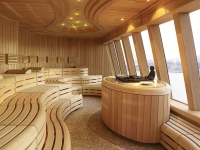
Despite the appearance of new construction materials on the market, wood is still in constant demand in the construction of baths. It makes aesthetic and ecologically clean constructions, beneficial to the health of people inside. When building steam rooms, it is important to choose the right wood, because different species have different performance properties and other special qualities.

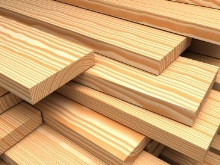
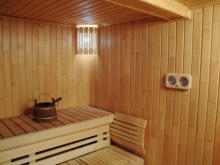
Features
Since ancient times, our ancestors valued baths made of wood - in them you could wash, with the comfort to spend time not only for the body, but also for the soul. Wood is a natural material, absolutely harmless to health, which when heated actively emits essential oils.
Staying in the heated room, a man inhales resins, thus goes clearance of the respiratory system. After steaming procedures in the wooden bath people note the burst of energy and vigor.
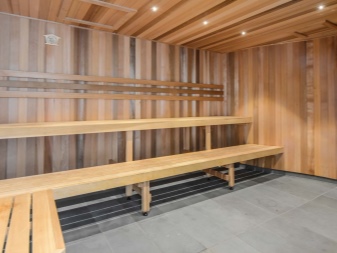
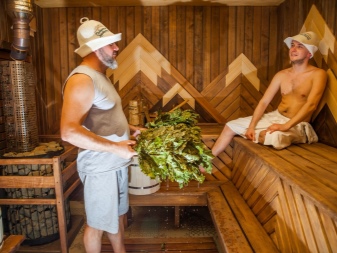
However, health-improving effect is not the only advantage of the wooden bath. There is a whole range of other weighty advantages.
- Low weight. Due to the small weight of the wooden structures do not exert strong pressure on the foundation, due to which you can refuse to install a massive and expensive foundation.
- Low thermal conductivity, due to which the room will be warm in winter.
- Aesthetics. Structures made of natural wood are particularly decorative.
- Fast construction of the structure without the need to hire heavy special equipment.
The disadvantages of wooden buildings are their high cost, especially if the construction used lumber from precious timber species.
The final price for the materials will depend directly on the region - where there are no woodworking plants, the cost of raw materials will be much higher.
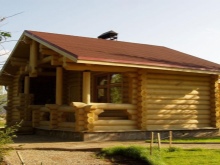
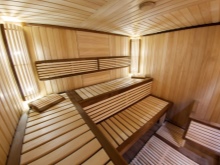
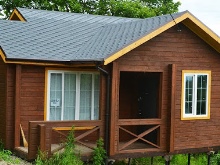
Types
The most popular lumber for the construction of the bath - a beam and a log. Each of them has certain advantages and disadvantages. Logs can be chopped or cylindrical. The former are processed manually. During their processing the upper layer of wood is preserved as much as possible. Logs are processed by hand, during which the upper layer of wood is retained as much as possible. In the process of processing we get smooth and even logs, which are superior to hand-hewn logs in terms of aesthetic qualities.
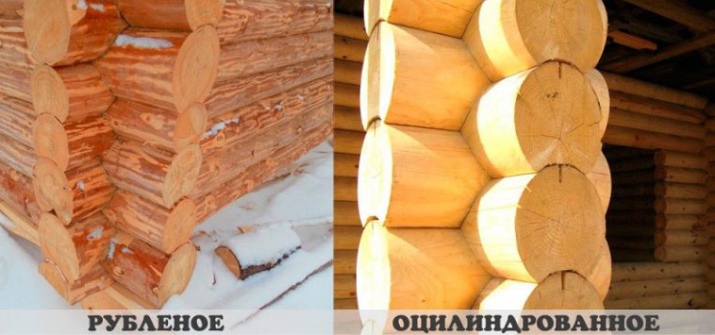
There are three types of logs.
- Solid logs are one of the cheapest building materials. It has a rectangular shape. During processing, solid timber is not dried, which contains the maximum percentage of humidity. Such wood can shrink and crack. Interior and exterior finishes will hide these defects.
- Profiled bar - a more expensive and high-quality material compared to the previous. It has notches and ridges designed to connect the lumber to each other. Thanks to such grooves, the construction is more reliable, and its erection will not take much time.
- Glued - the most expensive type of beam. During its production, logs are sawn into boards. After selection, quality boards are dried and glued together using pressing equipment and adhesive composition. Glued beam is a durable and aesthetic building material that is practically free of shrinkage.
Logs and beam are produced from different types of trees.
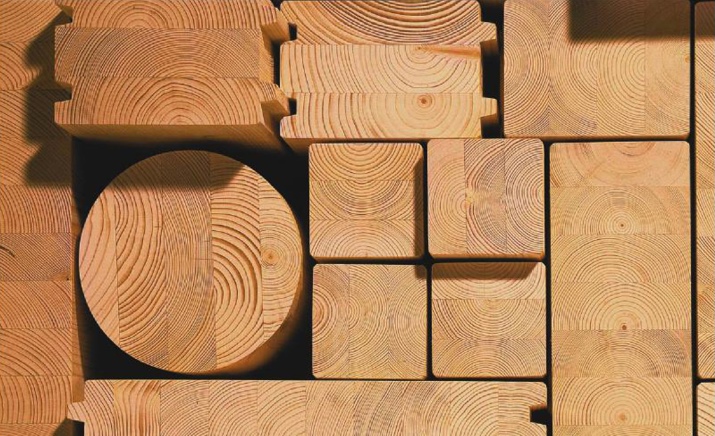
Let's consider what wood species are used for the construction of the sauna and bath more often than others.
Pine
Pine lumber is considered one of the most popular in the construction of sauna rooms. Their popularity is due to the extensive prevalence on the territory of Russia. The advantages of pine include:
- budget cost;
- easy processing due to the high softness of the material;
- Inexceptibility to all kinds of deformations (the formation of cracks in the log houses is a very rare phenomenon);
- High indicators of moisture resistance.
The main disadvantage of pine - excessive tarring, which leads to the active evolution of resin when the temperature increases in the steam room. Another disadvantage includes rotting of the material and its defeat by mold fungi in the absence of special treatment.
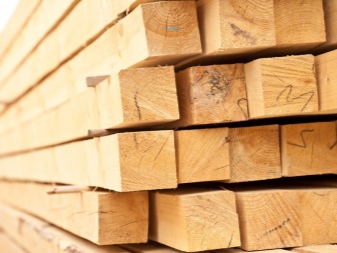
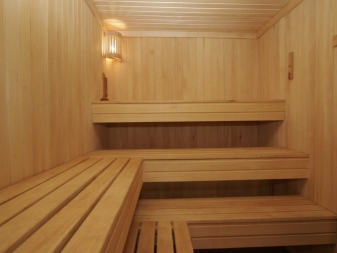
Spruce
This log cabin has a beautiful light orange color, which gives a special aesthetic and elegance of the building. By its performance qualities, spruce is similar to pine. Such lumber is affordable, resistant to cracking and shrinkage.
Spruce is a less resinous wood, but it is much more susceptible to fungal attack and decay. In addition, it has many knots and irregularities on its trunks, which makes processing extremely difficult.
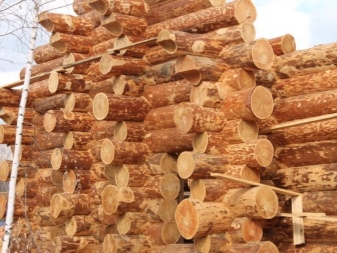
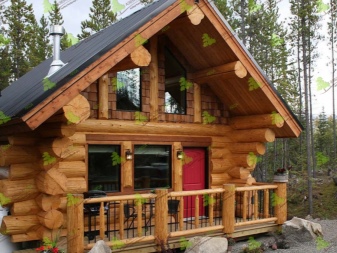
Larch
Larch, along with pine and spruce, is one of the conifers. Larch has a number of advantages which distinguish it from other sawn timber:
- high hardness;
- minimal shrinkage;
- High resistance to fungus and mold;
- Resistance to high humidity (with the time larch becomes more durable);
- resistance to sharp temperature changes.
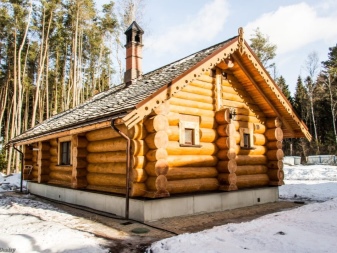
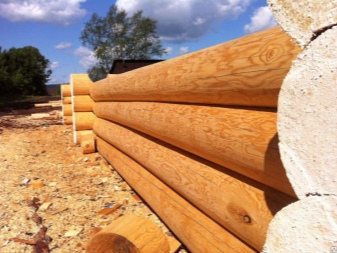
Larch is rich in phytoncides - natural substances that have a positive effect on human health.
The main disadvantage of this coniferous building material is its high cost (the price is about 2-3 times higher than for pine and spruce). Excessive resin content is also attributed to the disadvantages.
Extracted when the temperature in the steam room, essential components often provoke allergic reactions.
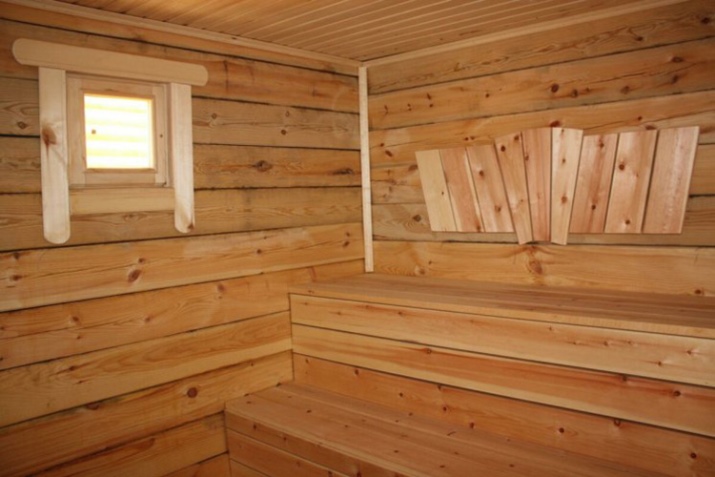
Lipa
Building materials made of this wood species, in the construction of baths are rarely used. Low demand is due to several significant disadvantages inherent in linden. These include the "fear" of high humidity, short-lived, the rapid darkening of wood in the absence of special treatment, susceptibility to fungus.
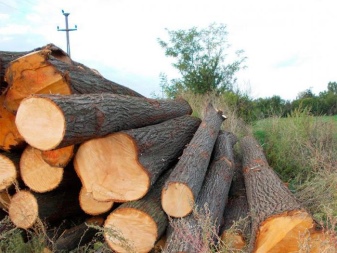
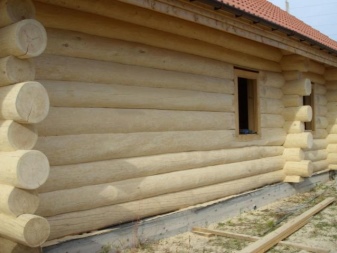
The advantages of linden materials:
- easy processing;
- no resin emission (in addition, this kind of wood does not heat);
- low heat capacity;
- malleability when processing;
- low density, due to which the erected structure practically does not shrink;
- low weight, which does not require the installation of a reinforced foundation;
- aesthetic appearance and pleasant fragrance.
In addition to these advantages linden also costs inexpensive.
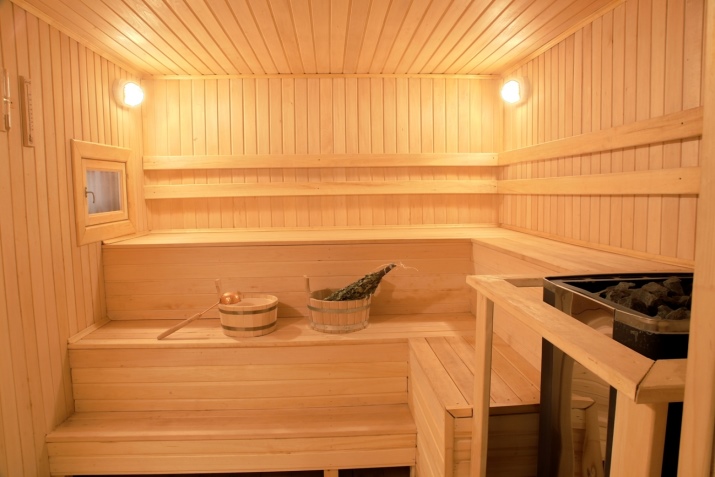
Oak
This wood has a number of significant advantages and disadvantages. Consider the advantages:
- high hardness and strength;
- resistance to high temperatures (practically does not warm up at significant temperature rises);
- has a natural decorative effect;
- is characterized by high heat savings.
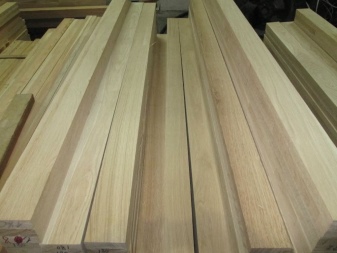
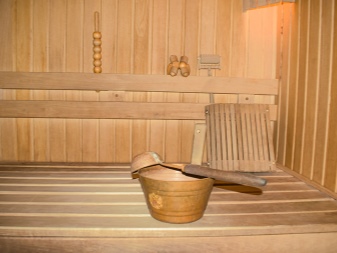
Despite these advantages, oak for the construction of the bath is chosen very rarely. There is a simple explanation - numerous disadvantages:
- "fear" of high humidity (because of it, the wood gets wet, and in drying it gets tan, which leads to its rapid cracking);
- excessive weight, which creates the maximum load on the foundation (in this case, you can not do without an expensive solid base);
- the complexity of processing.
Oak can not be called cheap - it is one of the most expensive materials on the domestic construction market.
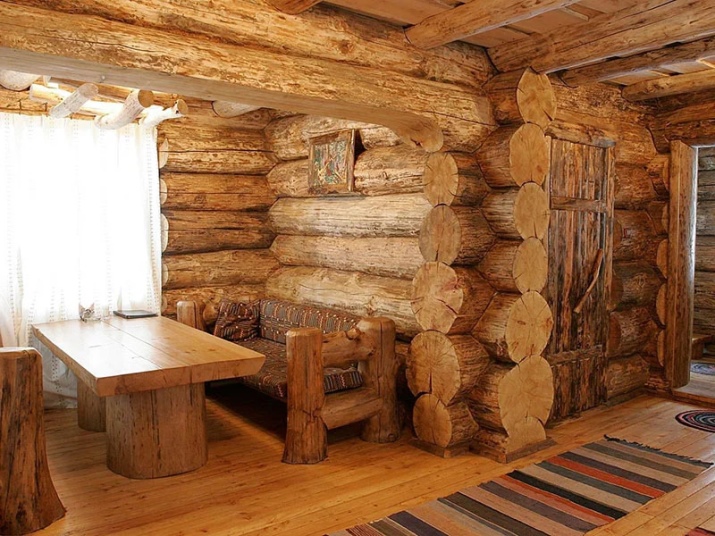
Other
Baths are also built from aspen, cedar and birch. Aspen has a pleasant shade of red. It is resistant to moisture, over time acquires greater strength. This material does not crack, gives almost no shrinkage and looks aesthetically pleasing.
Despite the fact that there are many aspen forests in Russia, this lumber is most often shipped from abroad. Domestic wood often has a rotten core. Another disadvantage of birch lumber is its labor-intensive processing.
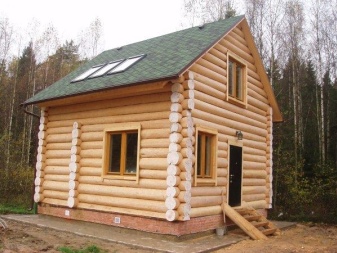
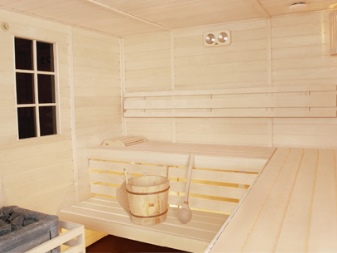
Birch, thanks to its low cost, is often used in the construction of baths. This is a soft material, characterized by malleability in processing due to its texture. Birch has minimal price tags and is available in any volume in Russia.
Its disadvantages include poor resistance to rot formation, the rapid destruction of wood in high humidity, susceptibility to insect infestation and high shrinkage.
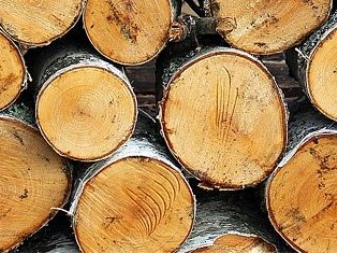
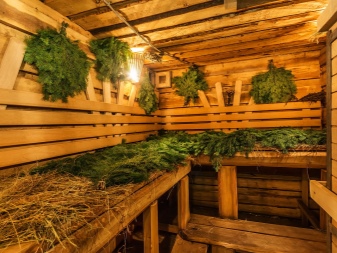
Popularly used wood for the construction of the bath box is cedar. From it get strong, durable and long-lasting structures. They have high heat-saving properties, so they are warm even in the winter.
However, due to the high price of cedar, the construction of the bath can not be called affordable. Cedar steam rooms can not be afforded by everyone.
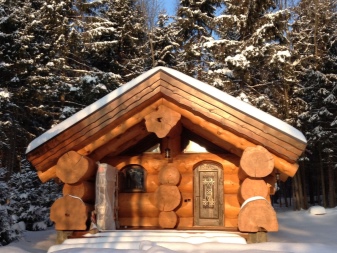
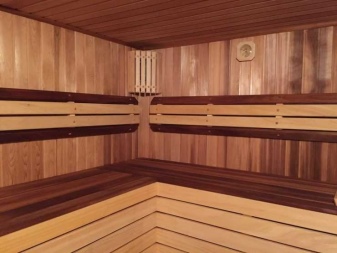
How to choose?
Steam rooms in Russia are built primarily of timber. At the same time can be used different building materials for exterior and interior decoration. When decorating the interior of the wooden bath can also be used wood.
For the interior finish
For these purposes, preference is given to wood that is not afraid of moisture, high temperatures and sharp temperature changes. It is not recommended to use spruce and pine for interior decoration. It is best to use hardwoods such as lime, aspen or oak.
Among these trees especially linden proved itself. It is pleasant to the touch, a lot of heat is not. Its disadvantage is considered a rapid darkening under the influence of humidity and high temperatures.
To linden linings as long as possible kept a perfect appearance, it is impregnated with antiseptics and flame retardants.
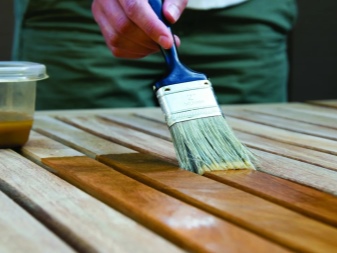
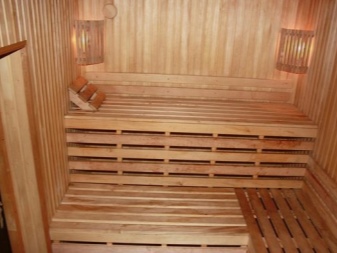
Oak and aspen are used for interior decoration is much rarer than linden. They are preferred not so often because of the higher price tag. To save money, experienced builders advise using oak and aspen linings selectively, to emphasize certain elements.
When cladding the interior of the bath, you can partially use cedar as well. It will fill the air with beneficial phytoncides, as well as bring a touch of luxury to the bath interior.

For exterior finishes
Baths built of wood, often over time, lose their external flawlessness. Often this happens because of the darkening of the building material. To return the building to its former aesthetics, it is further trimmed. This may be cladding or wood material, imitating beams.
For exterior decoration is recommended to give preference to materials from conifers. This can be pine, spruce or cedar. Clapboard has the following advantages:
- Has high thermal insulation qualities;
- easy to install;
- environmentally friendly;
- durable;
- Can be installed both vertically and horizontally.
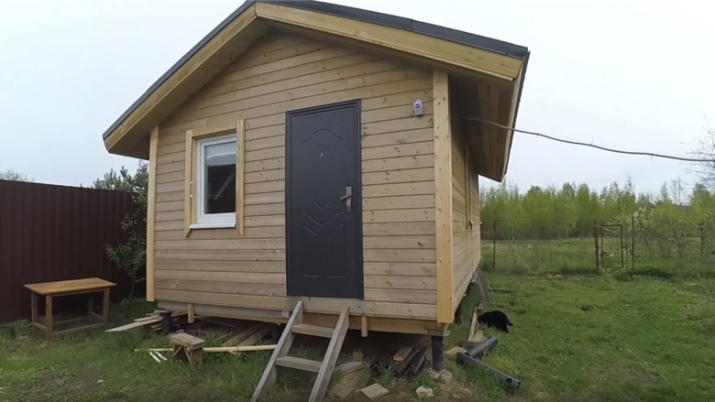
Material imitating beam - a kind of batten. This is an environmentally friendly raw material. This building material is easy to install, it perfectly resists various chemical and physical influences.
Cladding a wooden bath with cladding or imitation beams, you can not only improve the aesthetics of the room, but also increase its thermal insulation qualities.
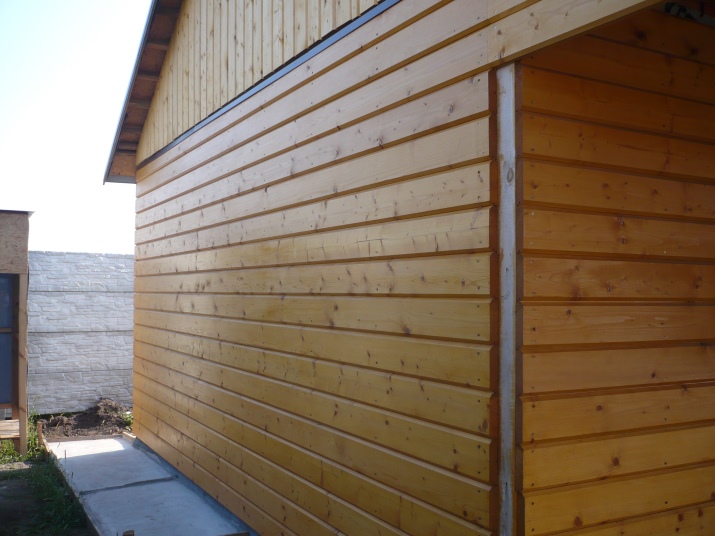
About what kind of wood is better for the bath, see the following video.




